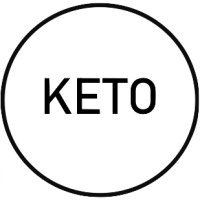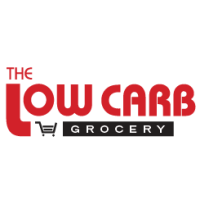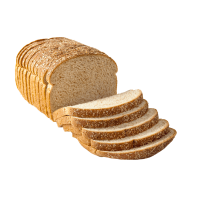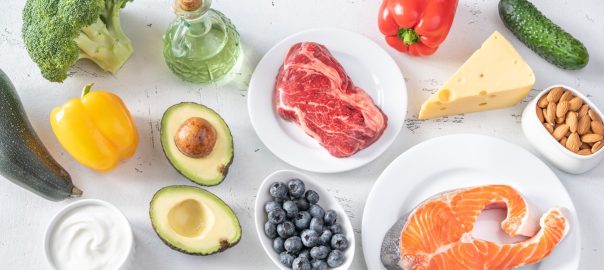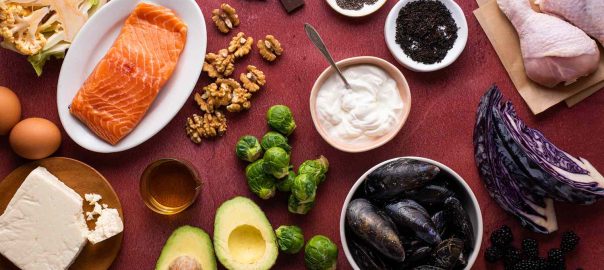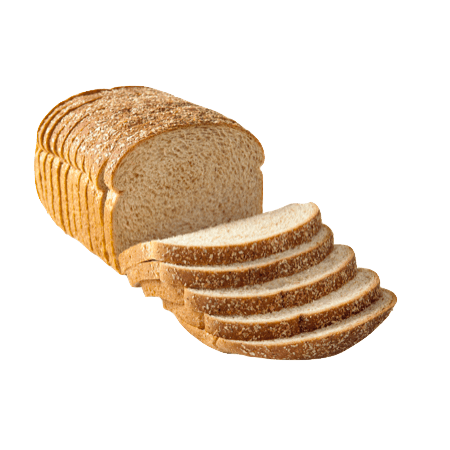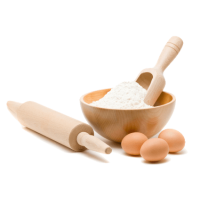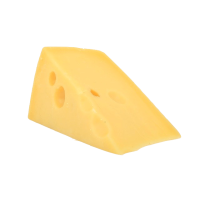The Low Carb Diet for Seniors
Improving Physical & Mental Health
Our bodies are always changing from the moment we are born. What our bodies require at each stage of our life differs vastly, and it is important to know how to nourish ourselves accordingly for optimal health and well-being.
In this article, we focus on the needs of those who are 60+ years. At this age, our metabolism, nutritional needs and digestive systems have changed a lot and the same diet we followed when we were young adults may not be the best, or healthiest, choice anymore. Our direction in this article is to explain the health benefits of a low carb diet in older age as well as to address other things to consider about nutrition when you reach later stages of life. Keep reading for health insights, tips, and products that are useful for older adults and especially those coping with certain physical conditions.
As always, it is a good idea to consult your doctor before making any changes to your lifestyle to ensure they are personalized to your specific health needs. If you are currently on any medications or dealing with any medical conditions, you may be at higher risk for certain complications.
What Happens to Our Bodies When We Age?
As we age, there are a few key changes that happen to the body that we should be mindful of when it comes to food and nutrition. These are described below.
#1: Our metabolism slows down
Your metabolism is the amount of energy that your body burns (or the rate at which it breaks down food) in order to function and maintain itself. As we age, our metabolism slows as much as 10% every decade after age 20. So, by the time you reach age 60, your metabolism has slowed down by nearly 40% since your refrigerator-raiding teenage years! If you are age 60 or older, you have probably already noticed a decrease in your appetite. Some people go from having three meals a day to just two, or smaller more frequent meals and snacks.
So, what does this mean? With a slower metabolism, the body absorbs nutrients from foods at a slower rate, meaning that we should focus on more nutrient-dense foods as we get older. In addition, it can be easier to put on pounds and harder to lose weight. Even if you don’t eat much more than usual, the body will store any excess calories that it is unable to burn in the form of fat. Having a higher body fat percentage can create several health problems and increase your risk for things like diabetes and heart disease.
#2: We lose muscle mass
Another not-so-nice thing that happens when we age is that we tend to lose muscle mass. Muscle mass is important for mobility and strength, but also, having more muscle mass can increase your natural metabolic rate since muscles burn more energy than fat.
Maintaining muscle mass is one of the keys to preventing excessive weight gain in older age, which we mentioned previously is more likely to occur due to slowing metabolic rates. However, it can be challenging to lose weight and build muscle later in life, which is why a healthy diet and daily exercise regimen become even more important around mid-life, if not earlier. Inactivity can accelerate muscle loss that already begins to occur around age 30.
Eating lean protein and incorporating resistance training (anything that requires the muscles to work against gravity, weights or rubber resistance bands) are all good ideas to help maintain or increase muscle mass. However, one thing to note about protein consumption in older age is that due to our slowing metabolism, animal proteins may not be broken down as easily. Instead, reach for plant-based proteins or grass-fed or marine collagen, which are a bit easier on the digestive system. Furthermore, research has shown that the amino acid profiles of animal proteins can trigger certain enzymes in the body that have negative effects on aging. Don’t worry about cutting out animal protein altogether, but opt for things like vegan protein shakes, tofu or tempeh more frequently.
#3: We are at higher risk for cardiovascular diseases.
Our heart and blood vessels become “stiffer” as we get older, meaning that our blood flow is slower and our blood pressure tends to increase. That said, the heart still functions well, but it may have to work harder to pump more blood when we exercise or become ill. Regular aerobic exercise (anything that gets your heart rate up and oxygen flowing, such as running, walking and swimming) can all contribute to improved heart health and athletic performance in seniors.
In addition, plaque from years of unhealthy eating can build up and exacerbate blood pressure problems. The good news is that this can be reversed, mainly through making changes in the diet. Avoid sugar and trans fats while increasing your fibre intake as well as healthy fats and lean protein. Do not rely on medications such as aspirin to provide bandage solutions for poor lifestyle habits.
Benefits of a Keto Diet for Seniors
Improved Heart Health
A ketogenic diet rich in healthy fats can actually improve heart health. While this may seem counterintuitive because we have been told that fat is “unhealthy” for so many years – especially if you were born around the time these claims started coming out – it has been shown that ketosis promotes fat burning, as well as many other benefits that can help reduce your risk for cardiovascular disease. As long as you are choosing the right sources of fat, that is, mostly monounsaturated and polyunsaturated fats (found in many plant foods and grass-fed animal foods), your risk for diet-induced cardiovascular disease should be reduced. This is because ketosis can help you lose weight and manage conditions such as diabetes that put you at higher risk for heart attack, stroke, etc. In addition, eliminating foods that cause plaque in the arteries to build up (such as trans fats found in processed food and fast food) further reduces your risk. For more information on how a low carb diet can improve artery health and cholesterol levels, check out our article, “Exploring Cholesterol Level Impacts on Health.”
Blood Sugar Control
Many seniors suffer from insulin resistance, a condition associated with or which can lead to diabetes that has serious life-threatening complications. The ketogenic diet is especially recommended for those wanting to manage their blood sugar levels and reverse insulin resistance, mainly because it drastically reduces dietary sugars allowing for blood sugar and insulin levels to return to normal. That said, if you are taking insulin or other medications currently to combat diabetes, talk to your doctor first about switching to a ketogenic diet, as these two things can work against each other.
Improved Cognitive Function
Another key benefit of the ketogenic diet for seniors is improved cognitive function. As we age, we all experience some loss of memory, reasoning and other thinking skills. In more serious cases, we can experience dementia, and even develop Alzheimer’s disease which can have life-threatening effects.
To reduce your risk of Alzheimer’s, it is often recommended to make positive lifestyle changes such as quitting smoking, keeping alcohol consumption to a minimum, following a healthy diet and exercising regularly. Recent research has found that a ketogenic diet, in addition to the other activities mentioned, can significantly reduce the risk of developing Alzheimer’s. This is because ketones offer a better fuel source for brain cells; studies have shown that ketones provide long-lasting energy, increase nerve cell growth, and strengthen nerve cell signaling.
Another big benefit of the ketogenic diet is that it helps reduce inflammation in all parts of the body, including in the brain. This is when a ketogenic diet is compared to a diet rich in refined sugars and carbohydrates, which trigger inflammation. Finally, researchers have found that the brain loses its ability to use glucose (obtained from dietary carbs) as a viable fuel source in Alzheimer’s disease, so it makes sense to provide an alternative for its continued functioning.
Prevention of Nutrient Deficiencies
A low carb or ketogenic diet often focuses on nutritionally dense whole foods, which can help prevent nutrient deficiencies in older adults. This group is the one of the most susceptible to nutrient deficiencies due to changing appetite levels and digestive capabilities. Some of the most important nutrients to be mindful of include iron, B vitamins, vitamin D and healthy fats. A lack of these can cause neurological dysfunctions, decreased energy levels and more physical signs of aging. Including enough healthy fats in the diet is also important because many of these essential nutrients are fat-soluble, meaning they require dietary fats in order to be properly absorbed by the body. You can get tested to check your levels of these and other nutrients to ensure you have healthy levels. Daily vitamins can also reduce the risk of nutrient deficiencies, but are not a replacement for a healthy diet.
Instead of focusing on achieving a lower weight, it’s better to focus on your body composition (muscle-to-fat ratio), and where fat is stored on your body.
How to Do a Low Carb Diet After 60
There are many types of low carb diets, such as the Low Carb High Fat (LCHF) diet (less than 50g of carbs a day), the Ketogenic diet (20-30g of carbs or less a day), a low carb Paleo diet, the Atkins diet (less than 25g of carbs a day, with at least 12-15g from vegetables) or a low carb Mediterranean diet. All of these have the same effect of reducing or eliminating high carb, refined and processed foods from the diet, which can worsen the effects of aging. Your choice depends on the level of carb consumption you and your physician determine is right for your personal health circumstances, and what you feel is manageable for your lifestyle.
Regardless of the type specific diet you choose, here are some examples of low carb foods that you can include in your diet:
- Fats – olives, avocados, coconut oil, butter, ghee, fatty fish (salmon, mackerel, sardines) nut and seed butter, flaxseed oil, ground flax or chia seeds, and hemp seeds. A word of caution for older adults is to avoid eating too many raw nuts and seeds because the shells and outer casings of these foods can damage the lining of the intestines as we age. Opt for ground versions, meals, spreads and oils instead.
- Protein – lean cuts of meat, eggs, fish, tofu, tempeh, protein powder or collagen powder. Avoid processed meats as these not only contain harmful additives, but also supply little nutrients compared to whole cuts of meat and can be tainted with hidden carbs. Also try to limit dairy in older age as the body doesn’t produce as many enzymes that are able to digest milk, which can cause some people to become lactose intolerant.
- Carbs – low glycemic fruits (berries, cherries, grapefruit and pears) and non-starchy vegetables. You can include whole grains (oats, quinoa, long grain rice, buckwheat, and bulgur), legumes and root vegetables if you choose a low carb diet with more flexibility.
Here are a few other things to keep in mind:
Choose healthy cooking oils
The right cooking oils can make all the difference in your health. Some common cooking oils, such as most vegetable and seed oils, contain high levels of inflammatory omega-6 fatty acids and release carcinogens when heated at high temperatures. Opt for oils that are rich in omega-3 fatty acids and have high smoke points such as extra virgin coconut oil, extra virgin olive oil, grass-fed butter or ghee and avocado oil.
Focus on whole foods
Any time foods are processed or refined they lose nutrients. By basing your meals around whole fruits and vegetables, lean cuts of meat, and healthy sources of fat you can obtain the most nutrition from your diet and avoid harmful additives or chemicals found in packaged or processed foods. While those foods might be convenient, they are one of the biggest detriments to our health in the modern world. Cooking with whole foods can also be simple and uncomplicated. For example, you could have scrambled eggs with a side of smoked salmon and/or avocado for breakfast, a salad with grilled meat for lunch and a homemade soup or casserole for dinner.
Ensure you are getting enough fibre
Fibre is always a good idea, and especially so in older age when faced with the struggles of a slow-moving digestive system! Some low carb sources of fibre include leafy greens, Brussels sprouts, broccoli, berries, flax seeds, chia seeds, almond flour and coconut flour (add these as thickeners to soups and stews or incorporate them into baked goods). Some great natural fibre supplements also include psyllium husk fibre and oat fibre; these relatively tasteless powders can be added to just about anything – smoothies, cereal, yogurt, etc. – and they are much more effective than fibre supplements or tablets from the drug store.
Be sure to eat carbs before and after strength training
As previously mentioned, building muscle mass is important in older age. However, muscles require carbohydrates to perform and repair themselves. So, even if you follow a low carb diet, be sure to consume carbs before and after you workout for optimal muscle growth. This might involve some extra meal planning if you pursue a very low carb diet, but you can always modify your diet according to your health needs if you feel that building muscle mass is more important than losing weight, or vice versa.
Choose the right food sources
Aside from what you are eating, where it comes from is also an important consideration. When buying animal products, especially beef and dairy, look for grass-fed options. These provide significantly more vitamins, minerals, antioxidants and omega-3 fatty acids compared to grain-fed varieties, and the animals are raised more humanely. In terms of poultry and eggs, free-range or pasture-raised are the best options as, again, these animals are fed better diets and allowed to roam freely, which also prevents the spread of bacterial infections such as E. Coli.
Finally, organic foods are much more widely available and worthwhile, considering the low industry standards when it comes to the use of pesticides and other chemicals. While not everything you buy needs to be organic, the “Dirty Dozen” (i.e. foods that are most susceptible to avid pesticide use) should be on your list of what to buy organic. Anything locally grown or in-season is also a great choice; they are usually cheaper and sourced from smaller, more responsible suppliers.
Low Carb Products
Below are some of our top picks for low carb and keto-friendly foods that can make transitioning into a low carb diet more enjoyable!
- Slice of Life Carb Wise Bread – made with a grain-free blend of almond flour, flax and pumpkin seeds that provides 7g of healthy fats, 4g of fibre, 10g of protein, and just 3g net carbs per 2 slices. Available in Plain or Cinnamon Raisin!
- Nuco Coconut Crunch Cereal – Cinnamon
- Glutenull Bakery Keto Cookies – made with wholesome ingredients and natural sweeteners. Perfect with hot tea or coffee!
- Low Carb, Low Calorie and Sugar-Free Jam & Fruit Spreads
- Shirataki Noodles and Rice Substitutes – made from konjac root fibre that is low in calories and low in carbs. The best part? They are ready in just a couple of minutes!
- Low Carb Flours & Meals for at-home baking!
- Keto Bone Broth which is not only low in carbs but rich in several essential vitamins and minerals.
- Zero Carb, Zero Calorie Natural Sweeteners – great for swapping out your regular table or brown sugar. (Note: avoid artificial sweeteners as these contain harmful chemicals and additives that can be dangerous to consume at any age).
- Zero Calorie, Zero Sugar Sodas and Teas
Browse the rest of our inventory here for everything from low carb cereal to energy bars, condiments and sauces, snack food and more!
Stay Connected
We hope that we haven’t made you too hungry while reading this article! If any of these low carb potato chip substitutes have sparked your interest, we encourage you to try them out and write a review on our website, leave a comment on our Facebook page under this blog post, or tag us on Instagram @lowcarbgrocery! Whether you’re trying low carb or keto for the first time or if you’re a seasoned pro, be sure to join our conversations on Facebook and Instagram! We’d also love to hear what you think about our content, our products, and our customer service by leaving us a Google Review! And lastly, don’t miss out on deals, updates, and keto trends each week on our low carb newsletter!
More Low Carb Lifestyle Articles
Top Snack Foods
Discover the ultimate guide to keto and low carb snacking! We’ve compiled our favourite snacks and sweets that are both delicious and diet friendly! From chocolatey treats to savoury bites, we’ve got something for everyone!
Zero Carb Foods
Maintaining a low carb diet can be challenging, but with the right foods, it doesn’t have to be. This article is packed with product recommendations to help you stay on course. Discover how to fully embrace a keto or low carb diet with delicious meals that satisfy every craving.
Is Going Low Carb Healthy?
Interested in making the switch to a low carb diet but worried about adverse health effects? Learn more about the role that carbs play in your diet and how they affect your overall health and fitness goals to determine if a low carb diet is the right choice for you.
30 Low Carb Foods
Looking for delicious and satisfying meals that fit into your low carb lifestyle? Explore our list of 30 healthy low carb foods, including pantry staples and specialty products.
Getting Started with Keto
The keto diet, as it is commonly known, has surged in popularity due to the dramatic results that people have experienced. However, there remains some skepticism about how it works from those who are new to high-fat and high-protein eating. Learn more about this diet here.












